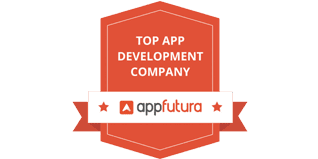In this article
- What Is a Hybrid Dating + Event App?
- Why Are Users Looking for This Hybrid Experience?
- Real-World Examples of Hybrid Social Apps
- Benefits of Adding Event Discovery to Dating Apps
- How to Add Event Features to Your Dating App?
- White Label vs Custom: What’s Right for Hybrid Development?
- What Should Founders Keep in Mind?
- Key Tech to Use
- Final Thoughts: The Future Is Context-Driven Dating
Blending Events with Dating has become a growing trend as the line between dating apps and social discovery platforms continues to blur. From swiping on profiles to meeting at events, today’s users crave more than just virtual connections—they’re looking for real-world experiences.
This shift has led to the rise of hybrid social apps that combine dating with event discovery. Whether it’s for music festivals, local meetups, or hobby-based communities, the demand for “connect-then-meet” functionality is growing fast.
So, what does this mean for entrepreneurs looking to create a dating app? In this blog, we dive into the trend, break down the benefits of this hybrid model, and explore how modern tech—like white label dating apps and custom app development—makes it easier than ever to build.
What Is a Hybrid Dating + Event App?
A hybrid dating-event app blends traditional dating features (e.g., profile swiping, one-on-one chat) with social discovery tools like:
- Local event listings
- In-app ticketing or RSVPs
- Group chats per event
- Interactive event forums
- User-created meetups
Instead of limiting interactions to just the app, these platforms encourage users to meet in person, creating richer, longer-lasting connections.
Why Are Users Looking for This Hybrid Experience?
Online dating fatigue is real. Many users are tired of endless chatting with no real-world outcome. Hybrid apps solve this problem by:
- Giving users a reason to meet—an event
- Creating shared context for conversations
- Reducing ghosting by aligning interests upfront
- Increasing trust and safety via group activities
Especially in communities like music lovers, travelers, or tech meetups, people aren’t just looking to date—they’re looking to belong.
Real-World Examples of Hybrid Social Apps
1- Radiate – A social app for music festival attendees. Users can find events, join chats, and match with others attending the same shows.
2- LOVOO – Combines live video and social discovery features, allowing users to connect during events or livestreams.
3- OnGraph Projects – Recently, our team helped develop a custom dating app for the music community, merging one-on-one interactions with group-based event discovery and polls.
These platforms show how blending event functionality into dating apps can create stickier user engagement.
Benefits of Adding Event Discovery to Dating Apps
Let’s look at how integrating events can improve your dating app’s success.
1. Higher Engagement
Users who join events or group chats tend to log in more frequently and stay longer in-app.
2. Built-In Icebreakers
Discussing a shared event or upcoming concert is a better opener than a simple “Hey.”
3. Cross-Monetization Options
You can monetize both sides:
- Offer premium dating features (swipes, visibility)
- Add paid event promotions, ticketing, or sponsored group access
4. Community Building
You’re not just running a dating platform—you’re fostering a community that users return to for both love and social connection.
How to Add Event Features to Your Dating App?
If you’re planning to create a dating app, here are ways to layer in event functionality:
- Event Listings: Display upcoming local events with details like date, location, type, and ticket info.
- Event-Based Matching: Allow users to see and connect with others attending the same event.
- Event Forums and Polls: Let users chat, vote on plans, or start threads related to the event.
- Group Creation: Give users the ability to form or join interest-based groups (e.g., “Indie Rock Fans at Lollapalooza”).
- Admin Controls: Ensure your admin panel lets you approve or moderate user-submitted events to maintain quality and safety.
White Label vs Custom: What’s Right for Hybrid Development?
To build a hybrid platform, you can either:
- Use a white label dating app as your base and extend it
- Opt for custom dating app development from the ground up
Here’s how they compare:
| Feature | White Label Dating App | Custom Dating App Development |
| Cost | Lower | Higher |
| Speed | 6–10 weeks | 12–16+ weeks |
| Flexibility | Medium | High |
| Ideal for | MVPs, fast go-to-market | Complex, unique platforms |
In the case of the music-focused dating app mentioned earlier, we started with a white-label base and added a custom Events tab, saving the founder both time and budget.
What Should Founders Keep in Mind?
If you’re building a hybrid app that merges dating and events, consider:
- UI/UX Design: Events and dating should feel part of the same flow, not like two separate apps.
- Geolocation Accuracy: Events must be discoverable based on the user’s real-time location.
- Scalability: The backend should handle spikes during major events.
- Verification & Safety: Let users verify their identity via images and restrict group/event access for safety.
Key Tech to Use
For fast development and scalability, consider the following stack:
- Frontend: Flutter (cross-platform)
- Backend: Node.js + MongoDB/PostgreSQL
- Admin Panel: Angular or React with role-based access
- Maps & Location: Google Maps API or Mapbox
- Chat & Notifications: Firebase or Twilio
Final Thoughts: The Future Is Context-Driven Dating
As dating apps evolve, users are demanding more than just matches—they want context, community, and real-life connections. By incorporating event discovery into dating apps, founders can deliver richer experiences, increase retention, and open up new revenue streams.
Whether you’re starting small with a white label dating app or investing in custom development, the hybrid model is a smart direction for the future of social platforms.
FAQs
A hybrid dating app combines traditional dating features (like swiping, matching, and chatting) with additional social elements such as event discovery, group chats, and community forums. This model helps users connect both online and offline, making it more interactive than regular dating apps.
Dating apps are adding event features to improve engagement and encourage real-life interactions. By allowing users to discover and join events, these platforms offer shared experiences that strengthen connections beyond just chatting, making matches more meaningful and reducing online dating fatigue.
To create a dating app with event discovery, start by defining your audience and core features. You can either use a white label dating app as a base and add an events module or opt for custom dating app development to build it from scratch. Make sure to include geolocation, RSVP tools, and group chats.
Blending social features like events or group chats with dating increases:
- User engagement and retention
- In-app interactions
- Monetization opportunities (through ticketing or subscriptions)
- Real-world meetups and shared experiences
This hybrid approach creates a stronger community feel and improves user satisfaction.
Yes. A white label dating app provides a fast and cost-effective way to launch. You can customize it by adding features like event listings, map-based discovery, and in-app forums. This is ideal for MVPs or startups testing a hybrid social model.
Essential features include:
- Swipe/match-based dating flow
- Event discovery by location and category
- Map view for nearby users and events
- Group chats per event
- Profile verification
- Subscription plans for premium access
- Admin panel for event moderation
Events act as social filters. By matching users who are attending the same concert, meetup, or festival, dating apps can increase compatibility. Shared context makes it easier to break the ice and reduces the awkwardness of starting conversations.
Absolutely. You can monetize:
- Dating side: premium swipes, boosts, super likes
- Event side: promoted listings, ticket sales, VIP group access
This dual model offers multiple revenue streams and makes the app financially sustainable.
Depending on complexity, it typically takes 10 to 16 weeks. If you’re extending a white label dating app, the timeline may be reduced to 6–10 weeks. Fully custom builds with advanced event features can take longer but offer complete flexibility.
Yes. By combining dating with real-world events, hybrid apps create more opportunities for interaction. Users are more likely to return to the app regularly, join communities, and meet people offline, resulting in higher engagement and better long-term retention.
About the Author
Let’s Create Something Great Together!
Latest Blog
















